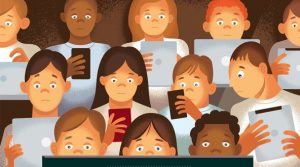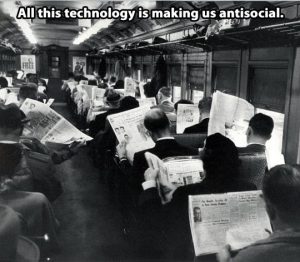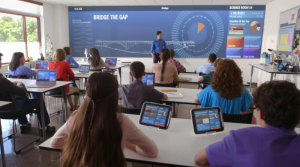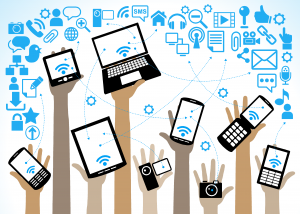Schools are judged by their retention rates – this is especially true at the college level. The school’s reputation, funding, and effectiveness tie retention rates. Unfortunately, reduced retention rates are getting worse every year. According to The National Student Clearinghouse, only 55 percent of first-time undergraduates who enrolled in Fall 2008 finished a degree within six years (TD Staff, 2016).
Those in higher education know that retention is a major concern, and there are several old fashioned strategies that can be used, but implementing new approaches with technology creates new and interesting ways to revive retention rates.

Students in today’s world is extremely tech-savvy. And rather getting information through strictly an academic advisor’s office, students are able to log on to an information student portal. Additionally, with the use of technology, students and educators are able to communicate via the portal. Students are able to post assignments, review grading, and etc. By having these portals, allows other educational resources to be feed up for more complex needs. Essentially, technology in higher education is making the old ways more accessible and quicker to use.
Online learning accounts for nearly three-quarters of higher education’s enrollment increases. Therefore, solving retention issues by implementing videoconferencing and mobile access are excellent tools to use. Moreover, apps and websites such as LiveText, iTunesU, Turnitin.com, iBooks, Inspiration, Kahoot!, Notability, and etc. keeps students engaged and organized with learning.
Technology also assists with student intervention strategies. Student Success Centers are popping up across the United States in all types of college and university campuses. To ensure retention rates are increasing, the focus on assisting students, especially at-risk students, is more crucial than ever before. These centers use technology constantly throughout the day to monitor and communicate with the school’s student body. From data collected, at-risk students would benefit from immediate interventions at points throughout the semester.
Some schools have even implemented a text messaging system, where staff members are informing students of their classroom tardiness, school closings, meeting updates, and etc. It’s important to find and use effective solutions to problems before it’s too late. Therefore, by using alert systems that show students are at-risk, staff members are able to reach out to the students and provide resources early enough that the intervention can actually be effective.

Lynn University’s president, Kevin Ross, stated, “ If we can help students continue some of the great behaviors that they learned in high school – like attending class – until the moment they graduate and eventually become employed, then we’re doing our job.”
Fortunately, there are a number of technological strategies that schools are currently using to improve retention. However, it’s important that the school institution is using strategies that are most effective for the school culture and environment.
Do you know of any technological strategies being used at your institution to improve retention rates?
References
Kelly, R. (2015, March 9). Lynn University To Track Student Attendance by iPad Location. Retrieved July 09, 2017, from https://campustechnology.com/articles/2015/03/09/lynn-university-to-track-student-attendance-by-ipad-location.aspx
TD Staff. (2016, October 12). How Technology Can Help Drive Student Retention in Higher Ed. Retrieved July 09, 2017, from https://techdecisions.co/mobility/how-technology-can-help-drive-student-retention-in-higher-ed/#
https://campustechnology.com/articles/2015/03/09/lynn-university-to-track-student-attendance-by-ipad-location.aspx
https://campustechnology.com/articles/2015/03/09/lynn-university-to-track-student-attendance-by-ipad-location.aspx









